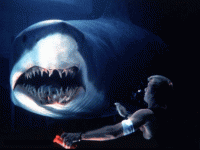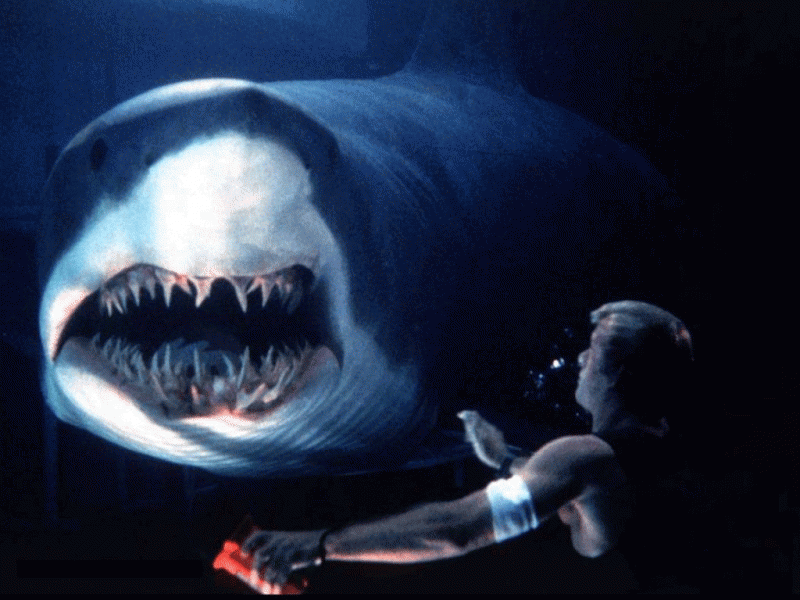 By Nik Rasmussen– Get ready to dive into the Deep Blue Sea. The 90’s were full of monster movies. In my mind, Deep Blue Sea was the only other good shark movie besides Jaws. A team of scientists in a lab facility deep in the ocean has been developing a drug to cure brain diseases including Alzheimer’s by experimenting on sharks.
By Nik Rasmussen– Get ready to dive into the Deep Blue Sea. The 90’s were full of monster movies. In my mind, Deep Blue Sea was the only other good shark movie besides Jaws. A team of scientists in a lab facility deep in the ocean has been developing a drug to cure brain diseases including Alzheimer’s by experimenting on sharks.
Why sharks? According to the movie, great white sharks’ brains do not break down at any age of the shark’s life span. The plan is to harvest “brain juice” from the sharks; however, unbeknownst to most of the team, the three test sharks are given genetic enhancements to provide sufficient amounts of brain juice for the experiment to work similar to cattle and steroids.
The experiment is a rush job because the big corporation funding the facility grows impatient and gives an ultimatum: give us a cure or you’ll be living out on the street. Well, the experiment works, but as a side effect, the oldest killing machines of nature grew smarter. Long story short, don’t get near a shark’s attack.
To be clear, this movie is not your traditional crappy Sci-fi channel B-film (bad acting, cookie-cutter plot and awful CG effects) like Sharktopus, for example. The actors are believable. The monsters look legit, and the underwater facility doesn’t look like a flooded parking garage. I’m not a science major, but the leap of imagination that takes place when they explain the sciences as to how and why this story takes place was convincing to me. Much like Jaws, after seeing Deep Blue Sea, I had second thoughts about swimming in large bodies of water.
Deep Blue Sea was released in 1999 and is rated R, which makes sense, since a PG horror film kind of defeats the purpose. Starring LL Cool J (first black man to ever survive in a horror film, spoiler alert), Samuel L. Jackson (Jurassic Park, Star Wars I-III and Pulp Fiction) and Thomas Jane (The Punisher and Steven King’s The Mist). It is directed by Renny Harlin, known for his work in Die Hard 2, Cliffhanger and Exorcist: The Beginning.






Leave a Reply